Guide to Buying the Perfect Pottery Wheel
Are you ready to dive into the world of pottery? Whether you're a curious beginner or a seasoned artisan, choosing the right pottery wheel can make all the difference in your creative journey. The right wheel not only enhances your ability to shape clay but also transforms the entire pottery-making experience into a joyful adventure. With so many options available, how do you find the perfect match for your needs? In this guide, we’ll explore essential insights and tips to help you navigate through the myriad of choices, ensuring you end up with a pottery wheel that feels just right for you.
First things first, let’s talk about the different types of pottery wheels out there. The two most common types are electric wheels and kick wheels. Each has its unique advantages that cater to different styles and preferences. Electric wheels are known for their ease of use and speed, making them a popular choice for many potters. They allow for consistent rotation, which is crucial when throwing clay. On the other hand, kick wheels offer a more traditional approach, giving you a sense of connection to the craft. They require a bit more physical effort, but many potters find this hands-on experience deeply rewarding. Understanding these differences will help you choose the best fit for your pottery needs.
When selecting a pottery wheel, there are several key features you should keep in mind. These features can significantly impact your pottery-making experience, so it's worth taking the time to evaluate them carefully. Look for aspects like speed control, weight capacity, and ease of use. A wheel with adjustable speed settings can be a game-changer, allowing you to work at a pace that suits your style. Additionally, consider the weight capacity of the wheel; it should be able to handle the size of the clay pieces you plan to create. Lastly, the overall user-friendliness of the wheel will influence your comfort and efficiency while working.
Now, let’s dive deeper into the importance of speed and control options. Adjustable speed settings are crucial for effective clay shaping. Imagine trying to mold a delicate piece while the wheel spins too fast—frustrating, right? A pottery wheel with versatile speed control not only enhances your creative process but also allows you to experiment with different techniques and styles. This flexibility can lead to surprising results, turning your pottery sessions into exciting explorations of form and design.
Variable speed settings are particularly important for achieving precision and control when throwing clay. With the ability to adjust the speed according to your needs, you can tackle everything from delicate detailing to robust shaping with ease. This adaptability is what separates a good pottery wheel from a great one. It’s like having a personal assistant that knows exactly how fast to go based on what you’re working on!
Another feature worth considering is the foot pedal functionality. A foot pedal allows for hands-free speed adjustments, freeing your hands to focus solely on shaping the clay. Imagine being able to fine-tune the speed while your hands are deep in the creative process! This not only improves your workflow but also enhances your focus, allowing for a more immersive pottery experience.
Size and portability are also important factors to consider, especially if you have limited space or plan to transport your wheel to different locations, such as pottery classes or workshops. A compact and lightweight wheel can be a blessing for those who love to create on the go. However, ensure that the wheel’s size doesn’t compromise its stability and performance. You want a wheel that feels solid and secure, even when you’re throwing larger pieces of clay.
Let's talk about the elephant in the room—your budget. Pottery wheels can range from affordable to downright pricey, so it’s essential to review the price range and understand what you’re getting for your money. While it may be tempting to go for the cheapest option, remember that quality often comes at a cost. Finding a balance between quality and affordability is key. Think of it as an investment in your craft; a durable wheel can enhance your skills and overall pottery experience.
Investing in a high-quality pottery wheel can pay off in the long run. A well-built wheel can handle the rigors of regular use, allowing you to focus on honing your skills rather than worrying about equipment failure. Think of it like buying a sturdy pair of shoes; while cheaper options might seem appealing, they often wear out quickly and leave you uncomfortable. A quality wheel will support your creative journey and help you grow as a potter.
Finally, let’s explore some strategies for finding the best deals on pottery wheels. Keep an eye out for seasonal sales, check online marketplaces, and don’t shy away from second-hand options. You’d be surprised at the treasures you can find if you’re willing to look a little deeper. Remember, the goal is to ensure you get the best value for your investment without compromising on essential features.
Q: What type of pottery wheel is best for beginners?
A: Electric pottery wheels are generally easier for beginners due to their consistent speed and ease of use.
Q: How much should I expect to spend on a good pottery wheel?
A: Prices can vary widely, but a decent pottery wheel typically ranges from $300 to $1,000, depending on features and quality.
Q: Can I use a kick wheel if I have limited space?
A: Yes, kick wheels can be compact, but ensure you have enough room to operate it comfortably.

Understanding Pottery Wheel Types
This article provides essential insights and tips for selecting the ideal pottery wheel, tailored to both beginners and seasoned potters. Discover key features, types, and considerations to enhance your pottery experience.
When it comes to pottery wheels, understanding the different types available is crucial for making an informed choice. Each type offers its own unique advantages and caters to various styles of pottery making. Whether you're a novice just starting out or a seasoned potter looking to upgrade, knowing the distinctions between electric and kick wheels can make all the difference in your creative journey.
First up, we have the electric pottery wheel. These wheels are powered by electricity and are designed to provide a consistent and smooth spinning motion. This type is particularly popular among beginners and experienced potters alike, as it allows for a hands-free experience. With an electric wheel, you can focus entirely on shaping your clay without the need to exert physical effort to keep the wheel spinning. This makes it easier to achieve precise shapes and forms, especially when you're trying to master intricate techniques.
On the other hand, we have the kick wheel, which operates on a completely different principle. Kick wheels are manually powered, meaning you use your foot to kick a pedal that spins the wheel. While this may seem like a workout, many potters swear by the tactile feedback and control it provides. The rhythm of kicking the wheel can create a meditative experience, allowing you to connect more deeply with your craft. Plus, kick wheels are often less expensive and require no electricity, making them a great choice for outdoor studios or places with limited power access.
To help you visualize the differences, here’s a quick comparison:
| Feature | Electric Pottery Wheel | Kick Pottery Wheel |
|---|---|---|
| Power Source | Electricity | Manual (Foot-powered) |
| Ease of Use | Very easy, hands-free | Requires physical effort |
| Price Range | Generally higher | Generally lower |
| Portability | Less portable due to power needs | More portable, no power needed |
So, which wheel is right for you? It often boils down to personal preference and your specific pottery goals. If you’re aiming for high precision and ease, an electric wheel might be the way to go. However, if you value tradition and enjoy a more hands-on approach, a kick wheel could be your perfect match. It’s all about finding what resonates with you and enhances your creative process.
In summary, understanding the types of pottery wheels available is the first step in your pottery journey. By weighing the pros and cons of electric versus kick wheels, you can make a choice that aligns with your artistic vision and practical needs. Are you ready to dive into the world of pottery? The right wheel is waiting for you!
Learn about essential features to look for in a pottery wheel, such as speed control, weight capacity, and ease of use. These elements can significantly impact your pottery-making experience.
Investigate the importance of adjustable speed settings and how they affect your ability to shape clay effectively. A wheel with versatile speed control can enhance your creative process.
Discover how variable speed settings allow for greater precision and control when throwing clay, enabling you to achieve different techniques and styles in your pottery work.
Understand the significance of foot pedals in pottery wheels, allowing for hands-free speed adjustments, which can improve your workflow and focus during the pottery-making process.
Examine the importance of size and weight in choosing a pottery wheel, especially if you have limited space or plan to transport your wheel to different locations.
Review the range of prices for pottery wheels and learn how to balance quality and affordability. Understanding your budget will help you make an informed decision without compromising on essential features.
Discuss the long-term benefits of investing in a high-quality pottery wheel versus opting for a cheaper model. A durable wheel can enhance your skills and overall pottery experience.
Explore strategies for finding the best deals on pottery wheels, including seasonal sales, online marketplaces, and second-hand options, ensuring you get the best value for your investment.
Here are some common questions that potters often ask when selecting a pottery wheel:
- What type of pottery wheel is best for beginners? Electric wheels are usually recommended for beginners due to their ease of use.
- Can I use a kick wheel if I have limited space? Yes, kick wheels are generally more compact and can fit in smaller areas.
- How much should I spend on my first pottery wheel? It depends on your budget, but investing in a mid-range wheel can provide a good balance of quality and affordability.

Key Features to Consider
When diving into the world of pottery, selecting the right pottery wheel can feel a bit overwhelming, especially with so many options available. But fear not! Understanding the key features of pottery wheels can simplify your decision-making process and enhance your pottery experience. Here are some crucial aspects to consider:
First and foremost, speed control is a vital feature that can significantly impact your pottery-making journey. A wheel with adjustable speed settings allows you to control the pace at which you work, which is essential for shaping clay effectively. Imagine trying to mold a delicate piece of pottery at a high speed; it could easily lead to disaster! With a wheel that offers variable speed options, you can slow down for intricate details and speed up for broader movements, providing the flexibility you need to explore different techniques.
Next up is the weight capacity of the pottery wheel. This feature determines how much clay you can work with at once. If you plan on creating larger pieces, you’ll want a wheel that can handle a heavier load. Conversely, if you’re just starting out or prefer smaller projects, a wheel with a lower weight capacity might suffice. Always check the specifications to ensure it aligns with your creative ambitions.
Another essential aspect is the foot pedal functionality. This feature allows you to make hands-free speed adjustments while your hands are busy shaping the clay. Think of it as the gas pedal in your car; it offers you the freedom to accelerate or decelerate without losing focus on your craft. A responsive foot pedal can streamline your workflow and keep you in the creative zone, making it an invaluable tool for any potter.
Now, let’s talk about size and portability. If you have limited space in your studio or plan to take your wheel to classes or workshops, you’ll want a model that is compact and easy to transport. Some pottery wheels are designed to be lightweight and foldable, making them perfect for potters on the go. Consider your workspace and how often you might need to move your wheel; this will help you choose the right size and style.
Lastly, don’t overlook the ease of use. A user-friendly pottery wheel will have intuitive controls and a straightforward setup process. For beginners, this can make a world of difference. You want to spend your time creating rather than wrestling with complicated machinery. Look for models that come with clear instructions and perhaps even tutorials to help you get started.
In summary, when selecting a pottery wheel, pay close attention to these key features: speed control, weight capacity, foot pedal functionality, size and portability, and ease of use. These elements will not only enhance your pottery-making experience but also empower you to unleash your creativity without limitations.
- What is the best type of pottery wheel for beginners? Electric pottery wheels are often recommended for beginners due to their ease of use and consistent speed.
- How much should I spend on a pottery wheel? Prices can range from $200 to over $1,000. It’s important to balance your budget with the features you need.
- Can I use a pottery wheel outdoors? Yes, but ensure it’s protected from the elements and placed on a stable surface.
- What maintenance does a pottery wheel require? Regular cleaning and occasional lubrication of moving parts will keep your wheel in top condition.

Speed and Control Options
When it comes to pottery, the of your pottery wheel can make or break your creative process. Imagine trying to shape a delicate piece of clay while your wheel spins too fast or too slow—frustrating, right? That's why having adjustable speed settings is crucial. A pottery wheel that offers a range of speed options allows you to tailor your experience based on the type of work you're doing. Whether you're throwing large bowls or fine vases, being able to control the speed can significantly enhance your ability to manipulate the clay effectively.
One of the standout features to look for is variable speed settings. A wheel with this functionality enables you to adjust the rotation speed gradually, giving you the precision needed for intricate designs. For instance, when you're starting with a large lump of clay, you might want to begin at a slower speed to center the clay properly. As you progress to shaping and detailing, you can increase the speed to achieve a smoother finish. This flexibility can lead to better results, allowing your artistic vision to come to life with greater ease.
Equally important is the foot pedal functionality. Imagine having both hands free to work your magic while effortlessly adjusting the wheel's speed with your foot. This hands-free operation not only improves your workflow but also enhances your focus. You won't have to stop and fumble with knobs or switches; instead, you can seamlessly transition between different techniques. A foot pedal allows for quick adjustments, letting you concentrate on your craft without interruption.
In summary, when selecting a pottery wheel, don't overlook the importance of speed and control options. The ability to adjust speed not only influences the quality of your work but also your overall enjoyment of the pottery-making process. So, whether you're a seasoned potter or just starting, investing in a wheel with these features can elevate your skills and creativity to new heights.
- What is the best speed for a pottery wheel? The best speed varies depending on the task. Starting slow for centering and gradually increasing speed for shaping is generally recommended.
- Do all pottery wheels have foot pedals? Not all pottery wheels come with foot pedals, but they are highly recommended for better control and workflow.
- How do I know if a pottery wheel is right for me? Consider your pottery goals, available space, and whether you prefer electric or kick wheels, as well as the features that suit your style.
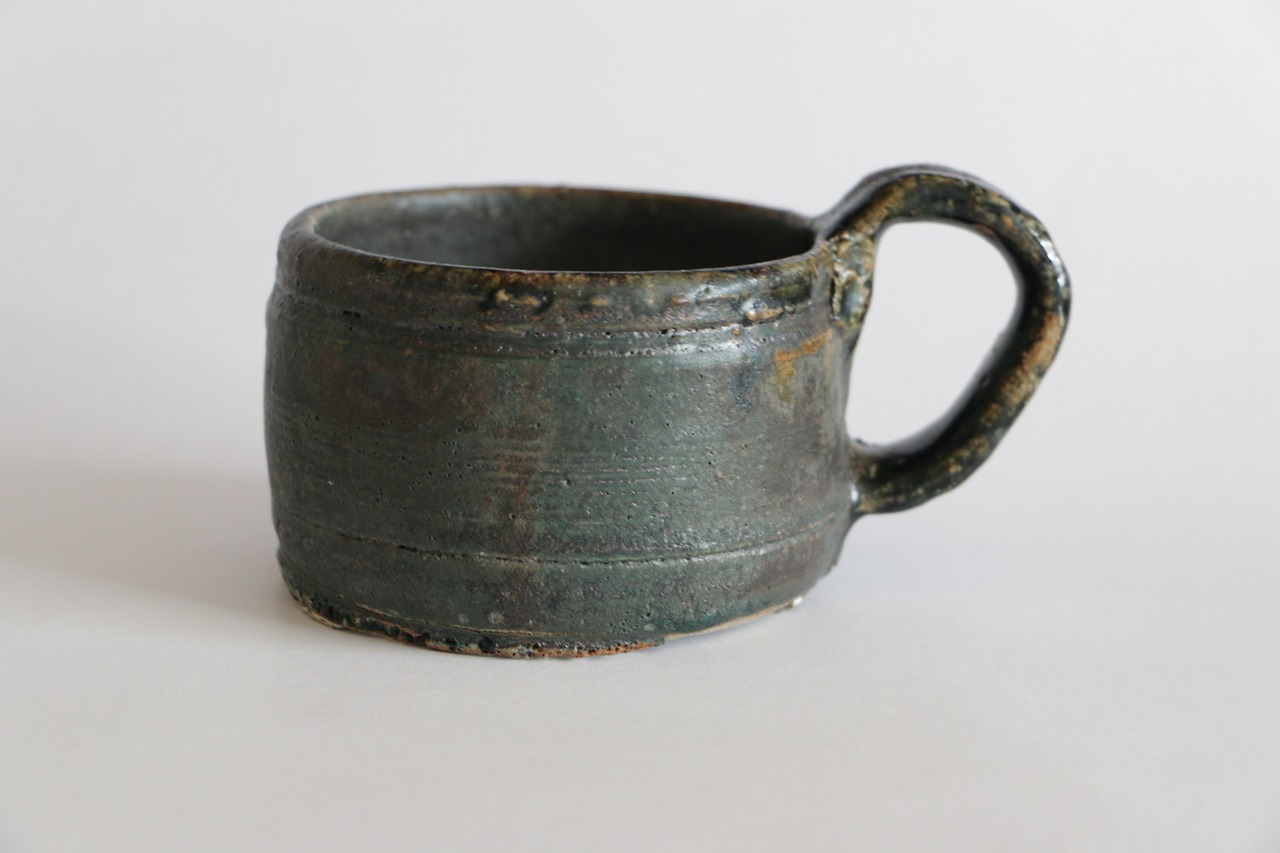
Variable Speed Settings
When it comes to pottery, precision is everything. Imagine you're shaping a delicate vase, and the clay is just a bit too soft. If your pottery wheel can't adjust its speed, you might find yourself in a sticky situation—literally! This is where come into play, allowing you to control the wheel's rotation according to your specific needs. With the right pottery wheel, you can slow things down for intricate designs or ramp up the speed for larger, more robust pieces.
Variable speed settings not only enhance your control but also open up a world of creative possibilities. For instance, when throwing clay, you might want to start at a slower speed to center the clay before gradually increasing the speed to shape it. This gradual transition can lead to a smoother finish and more refined forms. Think of it like driving a car: starting slow helps you gain control, and as you get comfortable, you can accelerate to reach your destination more efficiently.
Furthermore, the ability to adjust speed can significantly affect your technique. Different pottery styles often require varying speeds. For example, when creating a wide bowl, a slower speed allows for better control over the clay's movement, while a faster speed might be necessary for taller forms. Having a pottery wheel that accommodates these variations can truly elevate your crafting experience.
Moreover, consider how foot pedal functionality complements variable speed settings. A foot pedal allows you to make speed adjustments hands-free, enabling you to focus entirely on your shaping techniques without the distraction of manual controls. This combination of features can transform your pottery sessions into a more fluid and enjoyable experience, letting you concentrate on what really matters: your art.
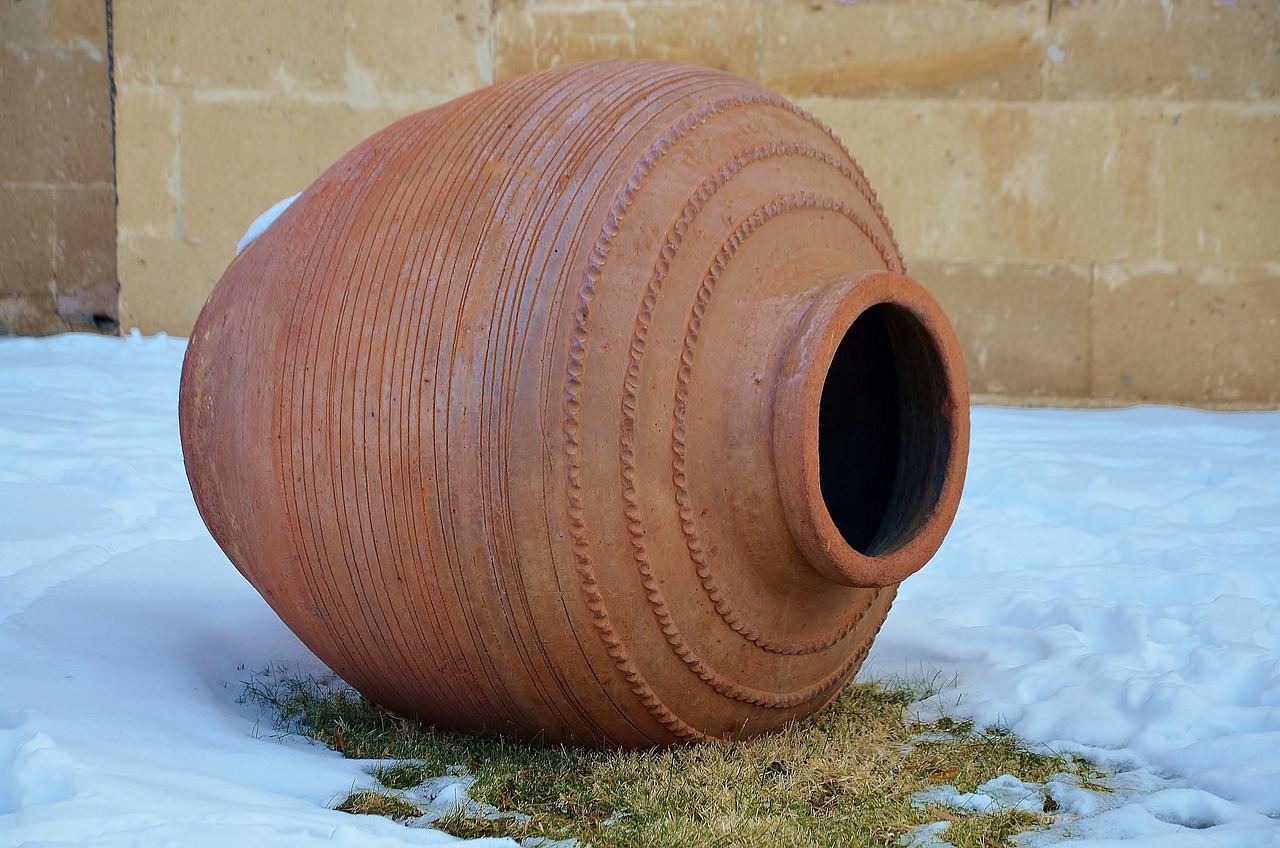
Foot Pedal Functionality
This article provides essential insights and tips for selecting the ideal pottery wheel, tailored to both beginners and seasoned potters. Discover key features, types, and considerations to enhance your pottery experience.
Explore the various types of pottery wheels available, including electric and kick wheels, and their unique advantages. Knowing the differences will help you choose the best fit for your pottery needs.
Learn about essential features to look for in a pottery wheel, such as speed control, weight capacity, and ease of use. These elements can significantly impact your pottery-making experience.
Investigate the importance of adjustable speed settings and how they affect your ability to shape clay effectively. A wheel with versatile speed control can enhance your creative process.
Discover how variable speed settings allow for greater precision and control when throwing clay, enabling you to achieve different techniques and styles in your pottery work.
One of the most significant advancements in pottery wheel design is the . Imagine being able to control the speed of your wheel without taking your hands off the clay. This feature is particularly valuable for potters who want to maintain a seamless workflow. The foot pedal allows you to adjust the speed intuitively, giving you the freedom to focus entirely on your creation.
When using a pottery wheel with a foot pedal, you can easily transition between different speeds, whether you're centering clay or shaping it into a masterpiece. This hands-free approach not only enhances your efficiency but also helps you develop a rhythm as you work. Picture yourself effortlessly moving from one stage of the pottery-making process to another, all while keeping your hands engaged in molding the clay.
Moreover, the foot pedal's design often allows for sensitive control. This means that even the slightest pressure can adjust the speed, giving you unparalleled finesse in your work. For instance, if you want to slow down to add intricate details or speed up for larger pieces, the pedal responds immediately to your foot's movement. This responsiveness can be the difference between a good piece and a great one.
In addition to enhancing control, foot pedals also promote a more comfortable working posture. Instead of reaching for knobs or buttons, you can keep your focus on the clay and your body aligned in a natural position. This ergonomic benefit is especially important during long sessions, reducing strain and allowing for extended creativity without discomfort.
In summary, the is not just a convenience; it is a crucial feature that can elevate your pottery experience. Whether you're a beginner or a seasoned potter, investing in a wheel with this feature can lead to greater artistic expression and efficiency in your craft.
Examine the importance of size and weight in choosing a pottery wheel, especially if you have limited space or plan to transport your wheel to different locations.
Review the range of prices for pottery wheels and learn how to balance quality and affordability. Understanding your budget will help you make an informed decision without compromising on essential features.
Discuss the long-term benefits of investing in a high-quality pottery wheel versus opting for a cheaper model. A durable wheel can enhance your skills and overall pottery experience.
Explore strategies for finding the best deals on pottery wheels, including seasonal sales, online marketplaces, and second-hand options, ensuring you get the best value for your investment.
- What is the best type of pottery wheel for beginners? Electric wheels are often recommended for beginners due to their ease of use and consistent speed.
- How much should I expect to spend on a pottery wheel? Prices can range from $200 for entry-level models to over $1,000 for professional-grade wheels.
- Can I use a pottery wheel in a small space? Yes, there are compact models designed for small studios or home use.
- Are foot pedals standard on all pottery wheels? No, not all models come with foot pedals, so it's essential to check before purchasing.

Size and Portability
This article provides essential insights and tips for selecting the ideal pottery wheel, tailored to both beginners and seasoned potters. Discover key features, types, and considerations to enhance your pottery experience.
Explore the various types of pottery wheels available, including electric and kick wheels, and their unique advantages. Knowing the differences will help you choose the best fit for your pottery needs.
Learn about essential features to look for in a pottery wheel, such as speed control, weight capacity, and ease of use. These elements can significantly impact your pottery-making experience.
Investigate the importance of adjustable speed settings and how they affect your ability to shape clay effectively. A wheel with versatile speed control can enhance your creative process.
Discover how variable speed settings allow for greater precision and control when throwing clay, enabling you to achieve different techniques and styles in your pottery work.
Understand the significance of foot pedals in pottery wheels, allowing for hands-free speed adjustments, which can improve your workflow and focus during the pottery-making process.
When it comes to choosing a pottery wheel, are crucial factors to consider. If your workspace is limited, or if you plan to take your pottery wheel to classes or workshops, you'll want a model that fits your lifestyle. A compact wheel can be a lifesaver in tight spaces, while a portable option allows you to unleash your creativity wherever inspiration strikes.
Imagine this: You're at a pottery retreat, surrounded by nature, and the perfect idea for a new piece strikes you. If you have a lightweight, portable wheel, you can easily set up and start working right away! On the other hand, a bulky wheel might just stay in your studio, collecting dust.
Most pottery wheels come in various sizes, so it's essential to assess your needs. Here are some things to keep in mind:
- Weight: A heavier wheel might offer better stability, but it can be cumbersome to move.
- Dimension: Ensure the wheel fits comfortably in your workspace without cramping your style.
- Portability Features: Look for wheels with built-in handles or wheels for easy transport.
In conclusion, the right balance of size and portability can significantly enhance your pottery experience. Whether you're a home-based potter or a mobile artist, selecting a wheel that suits your space and lifestyle can lead to a more enjoyable creative journey.
Review the range of prices for pottery wheels and learn how to balance quality and affordability. Understanding your budget will help you make an informed decision without compromising on essential features.
Discuss the long-term benefits of investing in a high-quality pottery wheel versus opting for a cheaper model. A durable wheel can enhance your skills and overall pottery experience.
Explore strategies for finding the best deals on pottery wheels, including seasonal sales, online marketplaces, and second-hand options, ensuring you get the best value for your investment.
Q: What is the best type of pottery wheel for beginners?
A: Electric wheels are generally easier for beginners to use, as they require less physical effort compared to kick wheels.
Q: How much should I expect to spend on a decent pottery wheel?
A: Prices can range from $200 to over $1,000, depending on features and quality. It's best to set a budget that allows for a good balance of quality and affordability.
Q: Can I use a pottery wheel on a small table?
A: Yes, but ensure the table is sturdy enough to handle the weight and vibrations of the wheel during use.
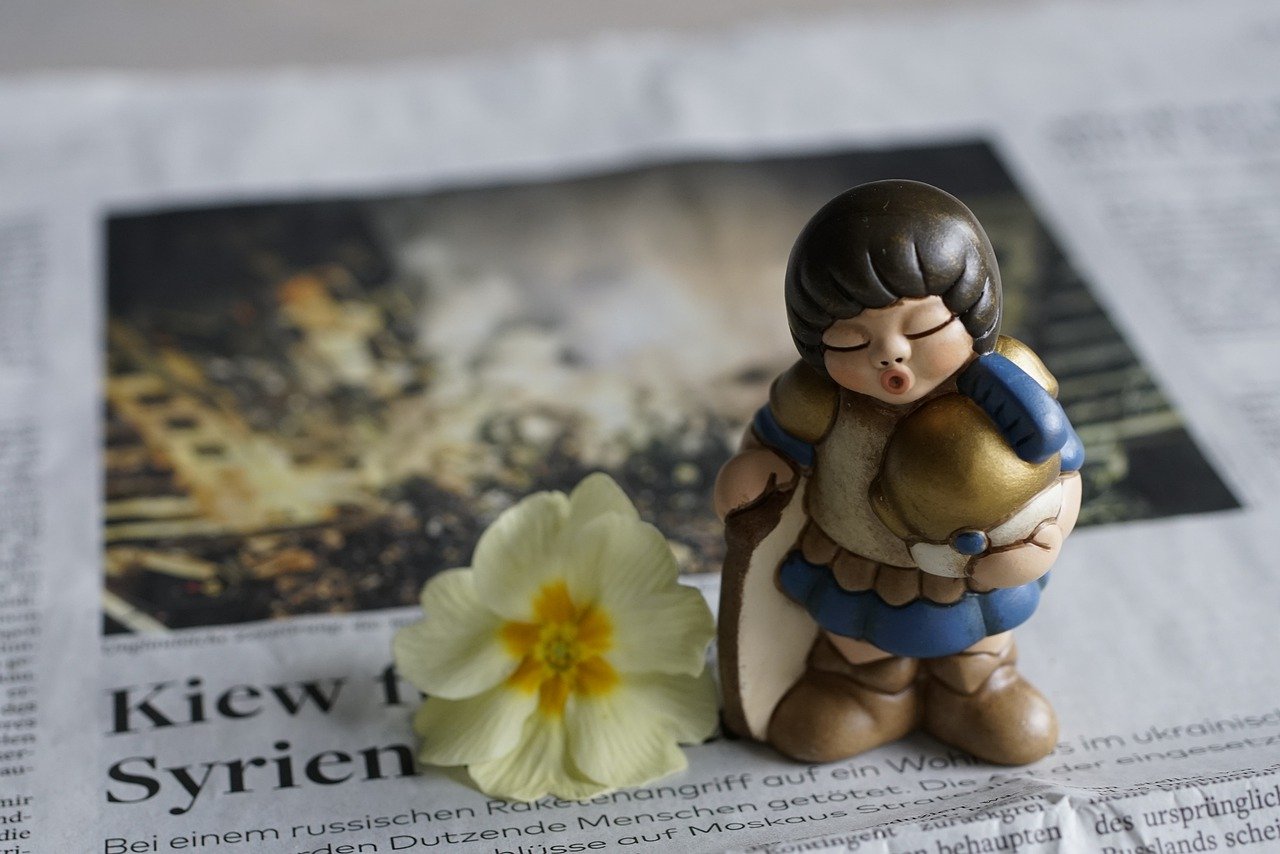
Budget Considerations
When it comes to buying a pottery wheel, one of the most critical aspects to consider is your budget. Pottery wheels can range from a couple of hundred to several thousand dollars, so it’s essential to determine what you’re willing to spend before you start shopping. But don’t let the price tags intimidate you! Understanding the balance between quality and affordability can help you make a wise investment that suits your pottery needs.
First off, it’s important to recognize that while you might be tempted to go for the cheapest option, investing in a quality pottery wheel can save you money in the long run. A high-quality wheel is often more durable and reliable, which means it can withstand the demands of frequent use. Think of it like buying a sturdy pair of shoes; you could go for the inexpensive ones that might wear out quickly, or you could invest a bit more in a pair that will last for years. The same principle applies to pottery wheels.
To give you a clearer picture of what you can expect in terms of pricing, here’s a quick breakdown of what you might find:
| Type of Wheel | Price Range | Typical Features |
|---|---|---|
| Kick Wheel | $200 - $600 | Manual operation, great for beginners, portable |
| Electric Wheel | $400 - $2,500 | Variable speed control, foot pedal, advanced features |
| Professional Wheel | $1,000 - $5,000+ | High durability, advanced technology, ideal for serious potters |
When setting your budget, consider how often you plan to use the wheel and what type of projects you want to undertake. If you’re just starting out, you might not need a top-of-the-line model. However, if you’re planning to make pottery a serious hobby or profession, investing in a more advanced wheel could be beneficial.
Another budget-friendly tip is to keep an eye out for deals and discounts. Many retailers offer seasonal sales or clearance events where you can snag a high-quality wheel at a reduced price. Additionally, consider exploring online marketplaces or local craft fairs, where you might find second-hand options that are still in great condition. Just be sure to check the wheel thoroughly before making a purchase!
In conclusion, while it’s essential to stick to your budget, remember that investing in a quality pottery wheel can significantly enhance your pottery-making experience. Weigh your options carefully, and don’t hesitate to shop around for the best deals. After all, finding the right pottery wheel is not just about the price tag; it’s about choosing a tool that will inspire your creativity and help you grow as a potter.
- What is the best pottery wheel for beginners? It often depends on your budget, but many recommend starting with a mid-range electric wheel for its ease of use.
- Can I find second-hand pottery wheels? Yes! Many potters sell their wheels online or at local craft fairs, often at a reduced price.
- How do I know if a pottery wheel is worth the investment? Look for features like speed control, weight capacity, and overall durability. Reading reviews from other users can also provide insights.
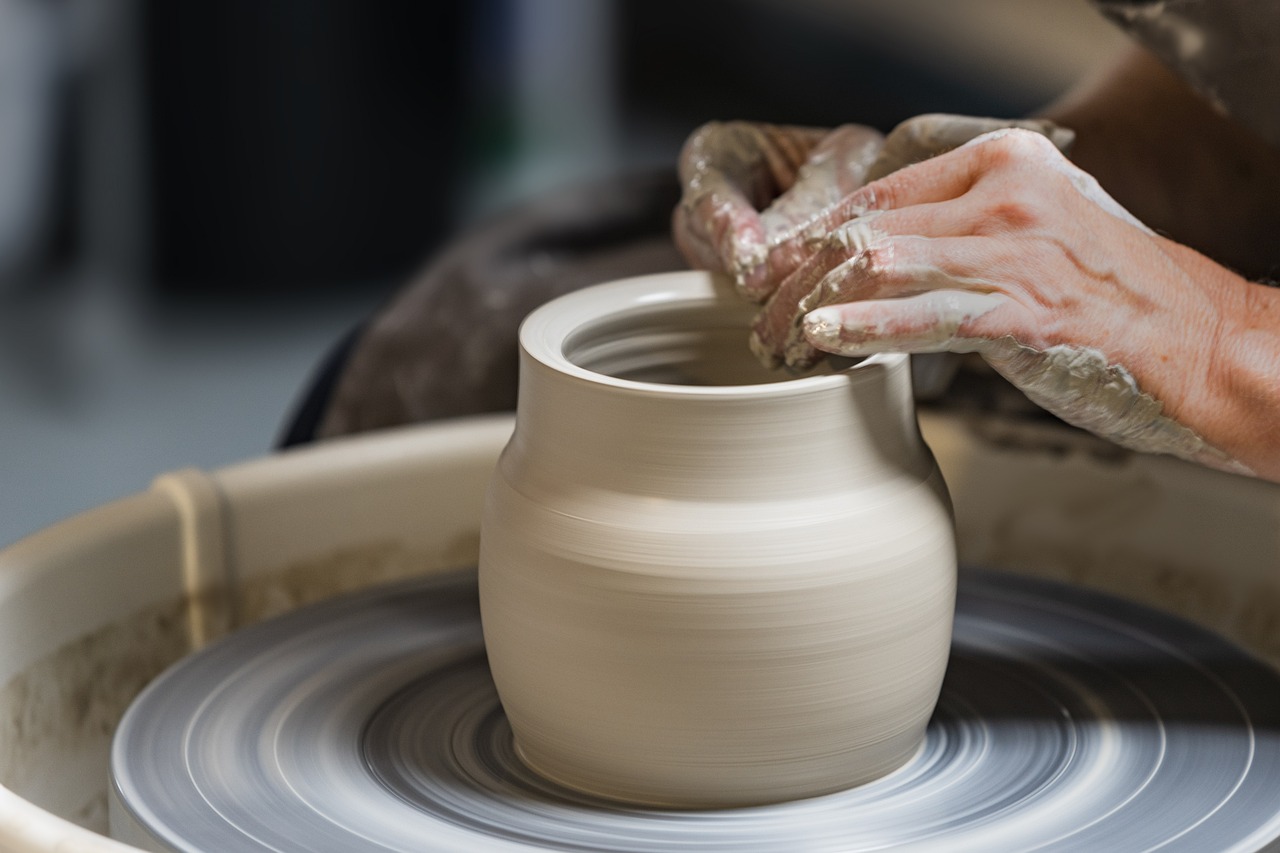
Investing in Quality
When it comes to pottery wheels, investing in quality can make all the difference in your creative journey. Think of your pottery wheel as the foundation of your craft—just like a sturdy house needs a strong foundation to withstand the elements, your pottery skills will flourish with a reliable and well-built wheel. While it might be tempting to opt for a cheaper model that fits snugly within your budget, consider the long-term benefits of choosing a high-quality wheel that will serve you well for years to come.
High-quality pottery wheels are designed with durability and performance in mind. They often feature robust construction materials that can handle the stress of constant use. Imagine trying to sculpt a beautiful vase on a flimsy wheel that wobbles and shakes—frustrating, right? Investing in a quality wheel means you can focus on your artistry rather than worrying about your equipment. Plus, many premium wheels come with enhanced features like superior speed control and better torque, which can significantly improve your throwing techniques.
One of the key advantages of a quality pottery wheel is the level of precision it offers. With a well-made wheel, you can achieve greater control over your clay, allowing you to experiment with different shapes and styles. This can be particularly beneficial for those looking to refine their skills or explore advanced techniques. The investment you make today can lead to a more enjoyable and productive pottery experience tomorrow.
Additionally, consider the resale value of a high-quality pottery wheel. Unlike cheaper models that may lose their value quickly, a well-regarded brand can retain its worth over time. If you ever decide to upgrade or change your setup, having a quality wheel can make it easier to sell or trade, ensuring you recoup some of your initial investment.
To help you understand the potential cost differences, here’s a quick comparison of various pottery wheel price ranges:
| Wheel Type | Price Range | Key Features |
|---|---|---|
| Entry-Level | $200 - $500 | Basic functionality, limited speed control, suitable for beginners. |
| Mid-Range | $500 - $1000 | Better build quality, adjustable speed, and decent torque. |
| Professional | $1000+ | High durability, advanced features, excellent precision and control. |
Ultimately, the decision to invest in quality should be guided by your personal goals and how serious you are about your pottery practice. If you see yourself spending countless hours at the wheel, crafting beautiful pieces, then a quality pottery wheel is not just an expense—it's an investment in your passion. Remember, the right equipment can elevate your craft, inspire creativity, and help you reach new heights in your pottery journey.
- What should I look for in a pottery wheel? Look for features like speed control, weight capacity, and overall build quality to ensure it meets your needs.
- Are electric pottery wheels better than kick wheels? It depends on personal preference; electric wheels offer convenience, while kick wheels provide a traditional experience.
- How much should I spend on a pottery wheel? Prices vary widely, but investing in a quality wheel can lead to a better pottery experience.
- Can I find good deals on pottery wheels? Yes! Check seasonal sales, online marketplaces, and local second-hand options for the best deals.
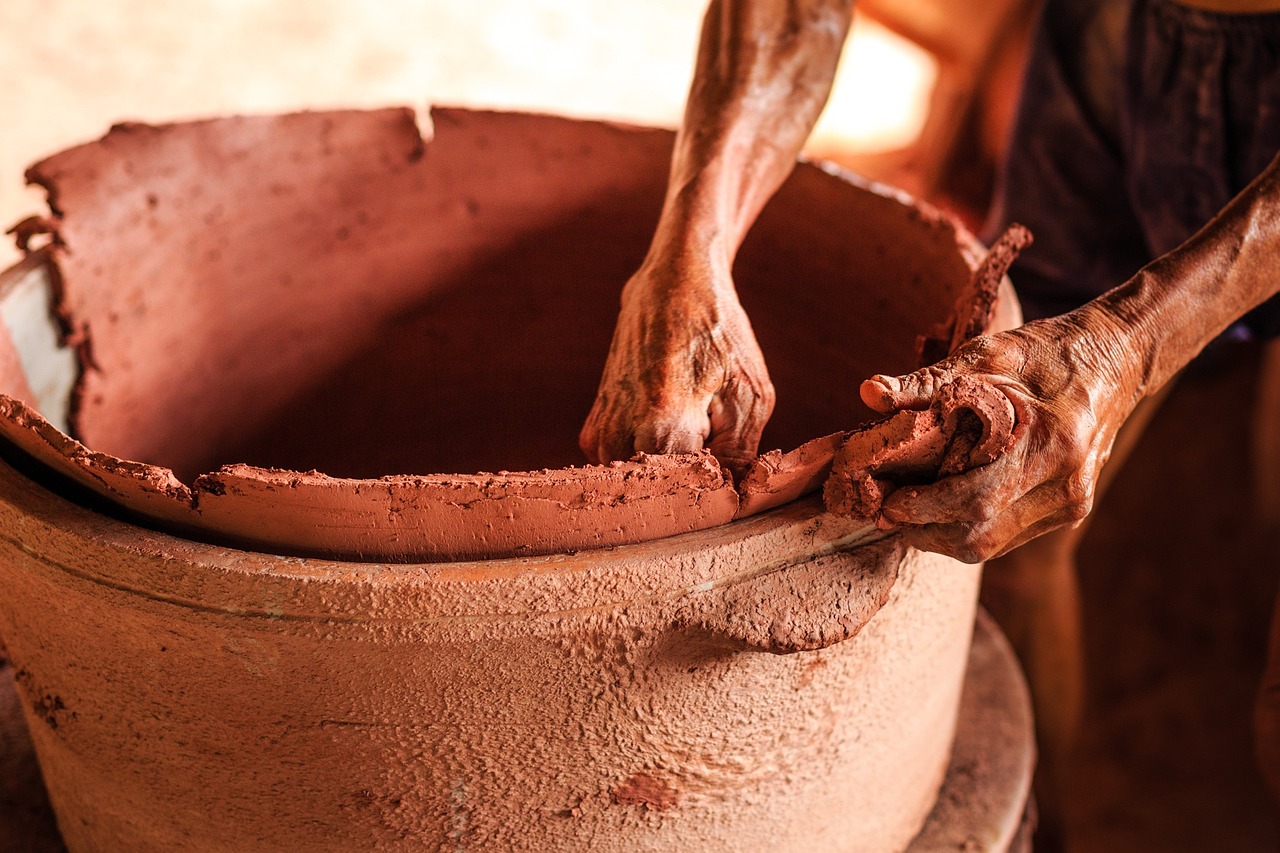
Finding Deals and Discounts
When it comes to purchasing a pottery wheel, finding the right deal can feel like searching for a needle in a haystack. But fear not! With a little strategy, you can uncover fantastic discounts that won’t break the bank. First and foremost, consider the timing of your purchase. Many retailers offer seasonal sales, especially during holidays or end-of-year clearance events. Keeping an eye on these sales can lead to significant savings.
Another great way to find deals is to explore online marketplaces. Websites like eBay, Craigslist, and Facebook Marketplace often have second-hand pottery wheels at a fraction of the original price. Just be sure to check the condition of the wheel and ask the seller any questions you may have. In fact, many seasoned potters upgrade their equipment regularly, meaning you might score a high-quality wheel that’s barely used!
Additionally, don’t overlook the power of local pottery studios or community centers. Sometimes, they sell their older models to make room for new ones. Building relationships with local potters can also lead to insider tips on where to find the best deals. Plus, you might even find opportunities to trade or buy directly from fellow enthusiasts, which can be both cost-effective and rewarding.
Lastly, consider signing up for newsletters from pottery supply companies. Many retailers offer exclusive discounts to subscribers, giving you access to deals before they’re available to the general public. Some even have loyalty programs that reward you with points for every purchase, which can be redeemed for future discounts. It’s like getting a little bonus for your love of pottery!
In summary, finding the perfect pottery wheel at a great price is all about being proactive and resourceful. By timing your purchase, exploring online marketplaces, engaging with local potters, and taking advantage of newsletters, you’ll be well on your way to scoring a fantastic deal on your next pottery wheel!
- What is the best type of pottery wheel for beginners? Electric pottery wheels are often recommended for beginners due to their ease of use and consistent speed.
- How much should I spend on a pottery wheel? Prices can vary widely, but a good quality beginner wheel typically ranges from $200 to $600.
- Can I find used pottery wheels? Yes, many potters sell their used wheels online or through local pottery studios, which can be a great way to save money.
- What features should I prioritize in a pottery wheel? Look for adjustable speed settings, a sturdy build, and portability if you plan to move it around.
Frequently Asked Questions
- What type of pottery wheel is best for beginners?
For beginners, an electric pottery wheel is often recommended due to its ease of use and consistent speed. Electric wheels allow you to focus on shaping your clay without needing to master the foot pedal right away, making the learning process smoother.
- How much should I expect to spend on a quality pottery wheel?
The price of pottery wheels can vary significantly, typically ranging from $200 to over $1,000. It's essential to balance your budget with the features you need. Investing in a higher-quality wheel can enhance your pottery experience and skills over time.
- What are the advantages of variable speed settings?
Variable speed settings allow for greater control when throwing clay, enabling you to adjust the wheel's speed to match your technique. This flexibility can help you achieve a variety of styles and improve the overall quality of your work.
- Is portability important when choosing a pottery wheel?
Yes, if you plan to take your pottery wheel to classes or workshops, portability becomes crucial. Look for lightweight models or those with a compact design to make transportation easier without sacrificing stability during use.
- Can I find good pottery wheels on a budget?
Absolutely! Keep an eye out for seasonal sales, online marketplaces, and second-hand options. Many potters sell their used wheels at a fraction of the original price, allowing you to find a great deal while still getting a quality product.
- What features should I prioritize in a pottery wheel?
When selecting a pottery wheel, focus on features like speed control, weight capacity, and ease of use. These elements can significantly impact your pottery-making experience, so choose a wheel that caters to your specific needs and preferences.
- How can a foot pedal improve my pottery-making process?
A foot pedal allows for hands-free speed adjustments, making it easier to focus on shaping your clay without having to manually change the speed with your hands. This can enhance your workflow and overall efficiency while working on your pottery projects.



















